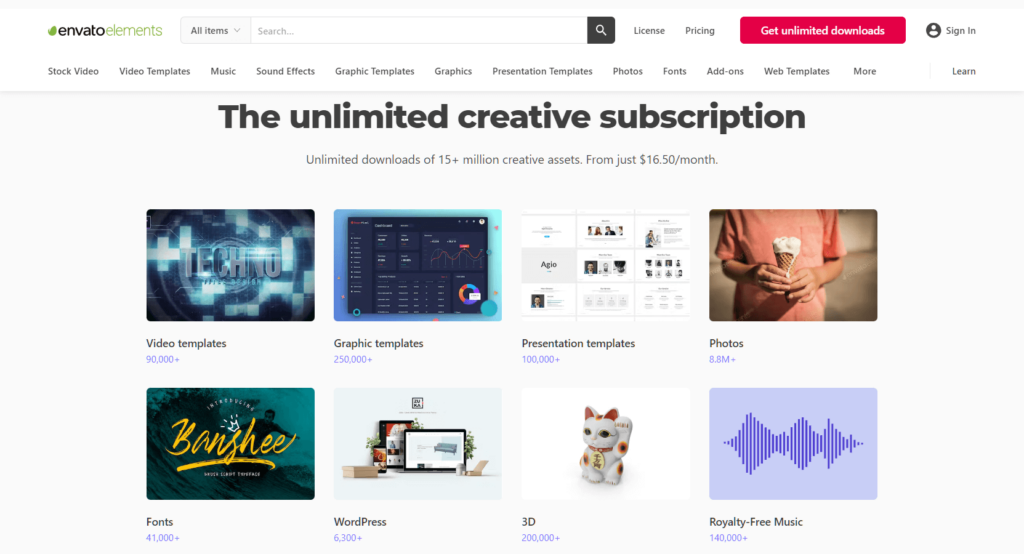
Creating your own online multi-vendor marketplace requires proper planning and execution. And what’s one of the most crucial aspects of your business plan? Your marketplace revenue model.
Without a well-defined method for generating revenue, you could end up letting disaster in through the door. Think about it: There’s a ton of competition in the online business market, and many of your rivals are meticulously strategizing, conducting research, undertaking development, and refining their approaches to achieve success. Thus, to win in the current e-commerce landscape, you need to have a marketing plan, an onboarding plan, and, as already stated, a concrete plan for making money.
In short, the absence of a clear marketplace revenue model significantly limits your capacity to produce income and advance your business’ growth.
It’s not all doom and gloom, of course! The fact is, you can use various marketplace revenue models to steer your proverbial ship in the right direction. And today, we’ll outline some of the most effective approaches that can position your business for success.
Let’s dive right in, shall we?
What Is A Marketplace Revenue Model?
A marketplace revenue model is the systematic approach that a platform uses to generate income from its operations. Basically, it outlines how said platform earns money, often by taking a portion of the transactions that occur between buyers and sellers on the platform.
Different models can vary in complexity and structure, and they are designed to ensure the sustainability and profitability of the platform. The choice of model often depends on factors such as the nature of the platform, the target audience, and the competitive landscape.

The primary target of your marketplace revenue model
Creating a multi-vendor marketplace is sometimes seen as a chicken and egg game. Who should you focus your initial marketing efforts on? Do you prioritize your vendors, your customers, or both?
Who should serve as your efforts’ primary target depends on whether you’re creating a marketplace from scratch (i.e. one devoid of a pre-existing community) or extending an existing community to include a multi-vendor marketplace.
If you’re kickstarting a platform from the ground up, it’s a good idea to prioritize onboarding your vendors. This strategy equips you with both products and vendors to leverage in your marketing endeavors.
Conversely, if you already boast a thriving community, a dual focus on both vendors and customers becomes a viable approach. However, unless you have your own existing product range and aspire to expand by integrating other vendors, we don’t recommend channeling your initial attention towards customers.

Today, we’ll explore two of the most reliable ways to gain income from your vendors. Then, we’ll look at a revenue-generating strategy revolving around your customers.
Generating Revenue From Your Vendors
Multi-vendor marketplaces generate their revenue from the partnership between the vendors and the marketplace. The income-generating strategies you can employ vary widely and depend on your specific business framework.
To determine the right monetization strategy for your marketplace, you’ll have to research those that have served other businesses well. In addition, you’ll have to test those strategies in your financial projections.
Two of the most common monetization strategies available include:
- Commission-based
- Subscription-based
Commission-based marketplace revenue model
The prevailing marketplace revenue model is the commission-based structure, wherein a percentage split is typically shared between your marketplace and vendors.
Commission-based rates are generally computed after factoring in expenses like payment processing fees, discounts, or affiliate payments. It’s not uncommon to witness marketplaces launching with exceedingly low commission rates that disregard these costs. Such an approach can make generating revenue exceedingly challenging and frequently results in marketplace failure. If you’re contemplating a modest rate of 5-15%, it’s likely to take a significant amount of time, if not hinder revenue generation entirely, to sustain your marketplace.
This stands as the easiest marketplace revenue model to initiate, entailing a percentage-based division of all sales between you and the vendors. To offer insights, we’ve gathered examples of well-known marketplaces along with their commission rates.
| Marketplace | Commission Split (Vendor/Marketplace) |
|---|---|
| WooCommerce Marketplace | 60/40 |
| Vimeo | 50/50 |
| Fiverr | 20/80 |
Beyond the basic split, there are tiered commission rates. While these rates also involve a percentage division, they hinge on the vendors’ cumulative sales. Typically, the vendor’s commission rate improves as their sales increase. In most cases, vendors start with a modest commission rate, which escalates as their sales volume grows.
A simple example of a tiered commission system can be found with the Mojo Marketplace team. As you can see below, their model presents both tiered rates and a fixed percentage rate. Like many marketplaces, they permit vendors to sell on other platforms. However, should a vendor exclusively choose Mojo Marketplace, their earning potential amplifies significantly. Consider this strategy when designing your marketplace revenue model.

Setting up commissions with WC Vendors
The free version of WC Vendors, WC Vendors Marketplace, supports the straightforward percentage division. Meanwhile, WC Vendors Pro extends the commission model by introducing fixed rates as well as the aforementioned tiered rates.
Depending on your marketplace’s nature and your specific needs, a basic split might suffice. However, if you wish to incentivize high-performing vendors, adopting tiered rates could prove more suitable.
If you’d like to learn how to use WC Vendors to implement the commission-based structure to earn revenue, check out our article, “How To Charge Vendors In Your Marketplace: A WooCommerce Commissions Guide.”
Subscription-based marketplace revenue model
Another popular marketplace revenue model is the subscription or membership model. Instead of levying a commission on each transaction, the marketplace charges a subscription/membership fee to the vendors. This is usually a tiered system that provides more features the higher and more expensive the subscription tier.
The subscription-based model is a great way to guarantee recurring revenue. This is because it doesn’t depend on sales to generate income.
In most cases, said model restricts various aspects of the vendors’ capabilities depending on how much they pay per subscription. Entry-level tiers may limit factors like the number or types of products they can list. Meanwhile, premium tiers typically grant vendors plenty of freedom as well as additional benefits such as vendor or product highlights.
The subscription model may take on a hybrid form, wherein the tiered rate is accompanied by varying commission rates. As the marketplace, this translates to not only having revenue from individual sales but also securing consistent, recurring income.
| Marketplace | Model |
|---|---|
| Home Exchange | $150/year |
| StudioTime | $23/month or $159/month |
| Shopify | $29-$299/month |
Embracing subscriptions serves as an effective strategy to safeguard your revenue and overcome the challenge of the chicken-and-egg dilemma. Depending on your product range, service lineup, vendor mix, and unique customer demographic, you could adopt diverse subscription models. This involves delving into industry research to determine the most and least successful strategies, enabling you to make informed decisions.
Setting up membership subscriptions with WC Vendors
With WC Vendors Membership and WC Vendors WooCommerce Subscriptions, you can create vendor membership products and turn your marketplace into a subscription box service.
If you’d like to learn how to take advantage of this marketplace revenue model, please read our article, “How To Charge Vendors In Your Marketplace: A Membership Subscriptions Guide.”
Generating Revenue From Your Customers
Customers are the essential gears that drive the multi-vendor marketplace business model. After all, their purchases are what translate into revenue for your vendors.
If your marketplace primarily deals with physical products, the revenue generated from your customers follows a straightforward trajectory—a transaction between the customer and your marketplace. The specifics of how this transaction unfolds hinge on the marketplace revenue model you’ve established with your vendors.
But what if your marketplace revolves around other kinds of products or services?
Customer subscriptions
When it comes to digital products, another revenue-generating option is selling a subscription for access to your entire product range. Subscription models often resemble all-you-can-eat arrangements, granting customers entry to the entire subscription catalog for a recurring fee. Although this approach can complicate your vendor commission system, it significantly amplifies the potential for scalable revenue streams benefiting both customers and vendors.
Illustrating this concept, consider Envato, the creative minds behind platforms such as CodeCanyon and ThemeForest. They’ve introduced Envato Elements — a novel subscription-based marketplace offering thousands of digital assets under a unified subscription cost. The revenue division among vendors hinges on customer sales and downloads — a principle known as “subscriber share.” This model is gaining traction, especially within expansive marketplaces.
However, this isn’t a model that we would recommend that you start with as creating a subscriber share-based marketplace revenue model is a complex operation. Presently, no marketplace plugins are readily available on the market to offer this functionality out of the box.
Conclusion
Determining how your marketplace will gain profits is crucial if you want your online shopping hub to succeed.
Thankfully, there are various revenue models to choose from, allowing you to gain income from:
Ultimately, the strategy you choose will depend on the nature of your business as well as your target market. Thus, we recommend taking your time to research and plan your course of action to ensure a higher chance of business success.
Do you have questions about choosing the ideal marketplace revenue model for your e-commerce endeavors? Let us know in the comments!



